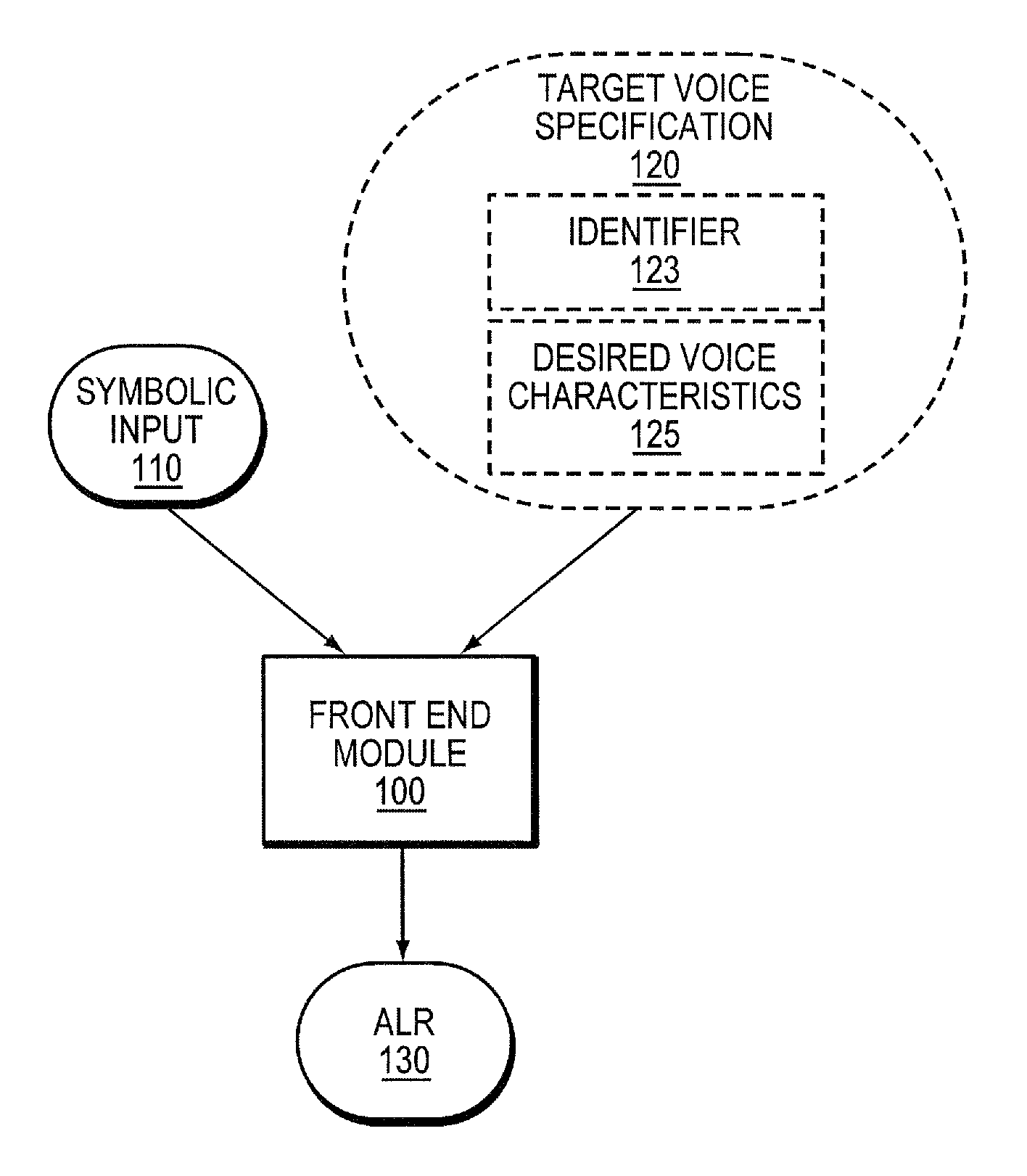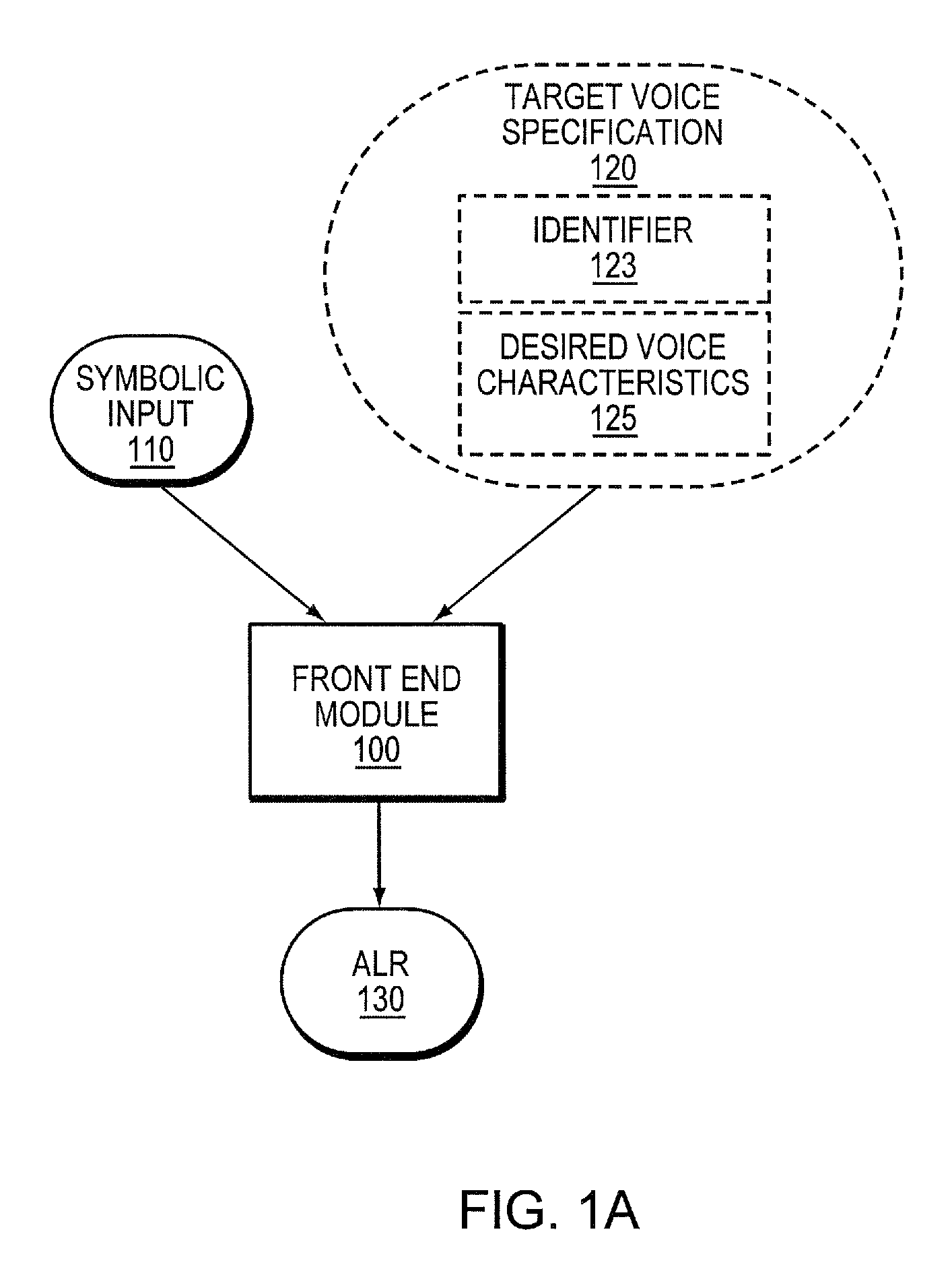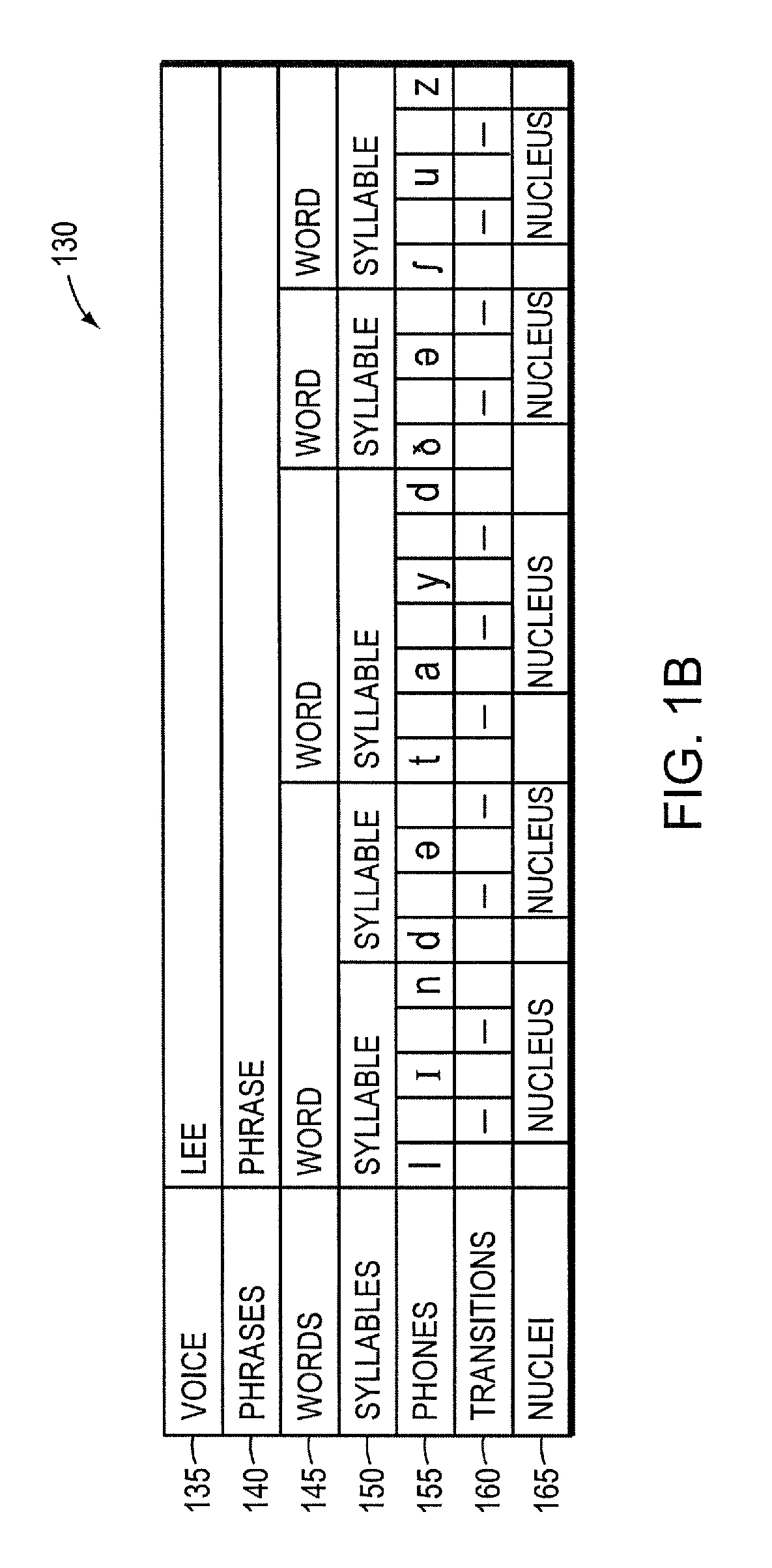System and method for hybrid speech synthesis
a hybrid and speech technology, applied in the field of speech synthesis, can solve the problems of intelligible speech, difficult to produce speech at the same time natural-sounding, and general poor suitability to produce voices that mimic particular human speakers, etc., and achieve the effect of producing a variety of high-quality and/or custom voices quickly and cost-efficiently
- Summary
- Abstract
- Description
- Claims
- Application Information
AI Technical Summary
Benefits of technology
Problems solved by technology
Method used
Image
Examples
Embodiment Construction
[0041]As mentioned above, an HSS system is herein defined as a speech synthesis system that produces speech by concatenating speech units from multiple sources. These sources may include human speech or synthetic speech produced by an RBSS system. While in the examples below it is sometimes assumed that the RBSS system is a formant-based rule system (i.e., an RBFS system), the invention is not limited to such an implementation, and other types of rule systems that produce speech waveforms, including articulatory rule systems, could be used. Also, two or more different types of RBSS systems could be used.
[0042]As discussed above, a voice that the system is designed to be able to synthesize (i.e., one that the user of the system may select) is called a target voice. The target voice may be one based upon a particular human speaker, or one that more generally approximates a voice of a speaker of a particular age and / or gender and / or a speaker having certain voice properties (e.g., brea...
PUM
 Login to View More
Login to View More Abstract
Description
Claims
Application Information
 Login to View More
Login to View More - R&D
- Intellectual Property
- Life Sciences
- Materials
- Tech Scout
- Unparalleled Data Quality
- Higher Quality Content
- 60% Fewer Hallucinations
Browse by: Latest US Patents, China's latest patents, Technical Efficacy Thesaurus, Application Domain, Technology Topic, Popular Technical Reports.
© 2025 PatSnap. All rights reserved.Legal|Privacy policy|Modern Slavery Act Transparency Statement|Sitemap|About US| Contact US: help@patsnap.com



